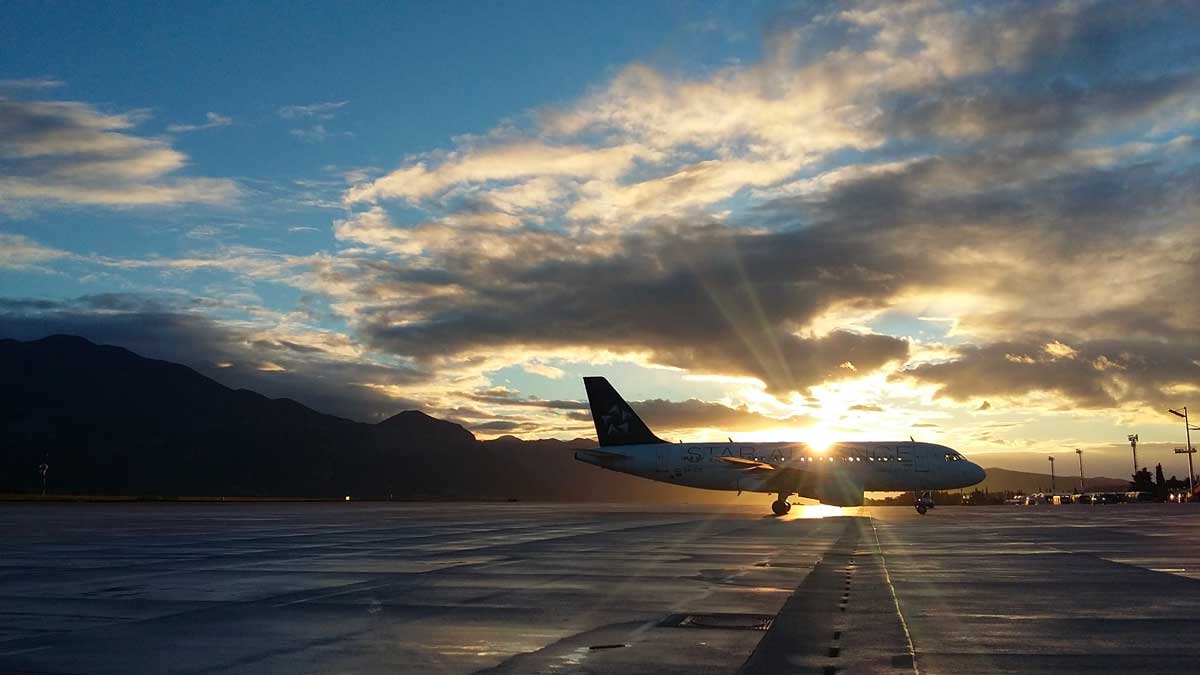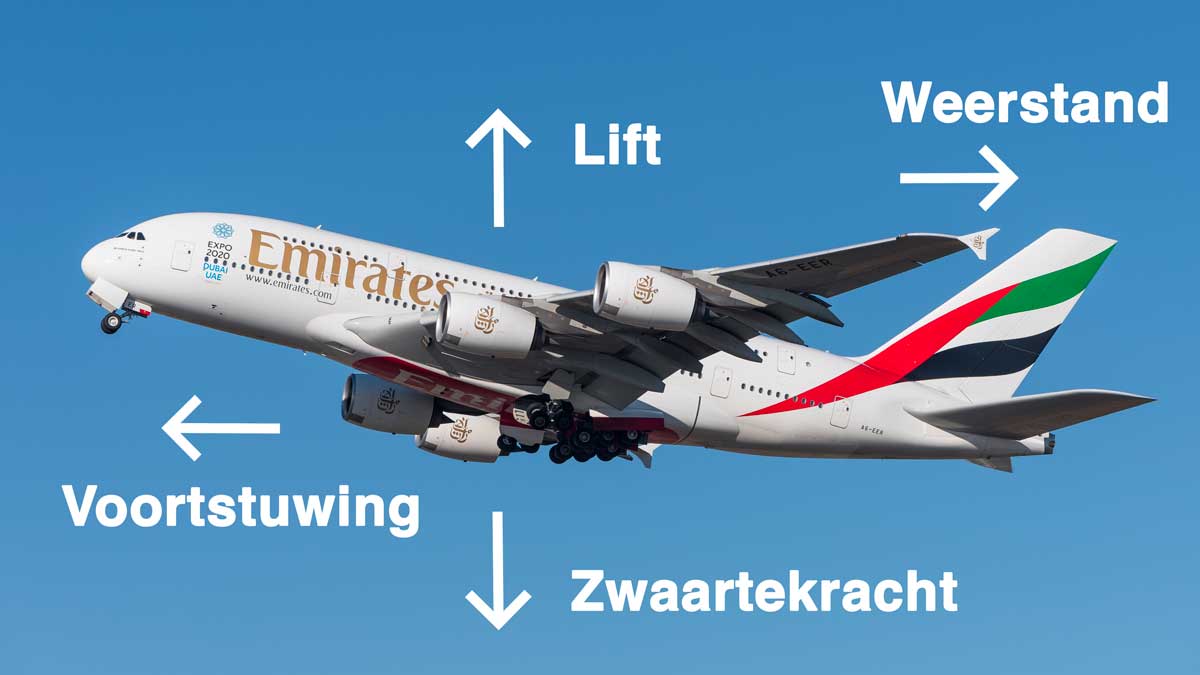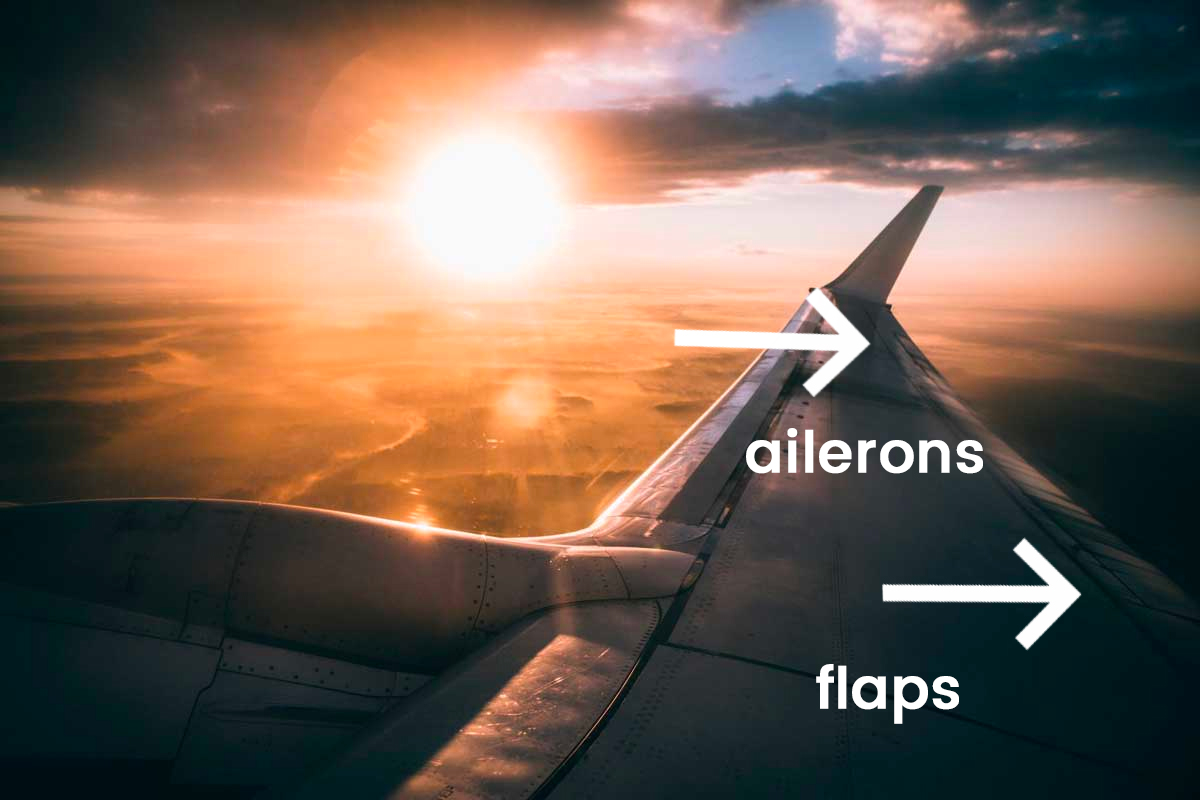As business traveler you regularly get on a plane without probably giving it much thought. Then when you do start thinking about your air travel, it's actually a very strange idea that a 400,000-pound metal tube can stay in the air for so long.
Flying may feel like a miracle, but in fact it is not "rocket science. In fact, the fact that an airplane stays in the air has to do with aerodynamics and thrust. How exactly this works? You'll find out in this article. How does an airplane actually fly?

An airplane flies by aerodynamics
Aerodynamics is the interplay of forces that allows an object to move through the air. You not only have to deal with it when you get into an airplane, but also when sailing, for example. But what exactly is it when flying?
If you make a cross-section of the wing of an airplane, you will see that the top is more convex than the bottom. An air particle flying along the top has to travel a longer distance than an air particle flying along the bottom. In other words, the speed of the air at the top of the wing is greater than the speed of the air at the bottom of the wing.

According to Bernoulli's Law, a gas flows faster as the pressure decreases. This also happens at the wing of an airplane. In this case, the gas is air. The pressure at the top of the wing is lower than the pressure at the bottom of the wing. As a result, the air flows faster.
An airplane flies by airflow
The flow of air particles allows an airplane to fly. In fact, an airplane hangs in the air because there is a lower pressure at the top of the wing than at the bottom. However, there must be airflow: the aircraft's wings must keep moving. This is because without airflow, there is no pressure difference.
To make sure the plane's wings keep moving, the plane naturally has (often two) powerful engines. An airplane's engines cause the wing to gain speed. This creates an equilibrium. This balance consists of two forces: the propulsive force of the engines and the drag of the plane. Vertically, we also see a force, namely the elevator that directs the plane upward. Against this is the weight of the aircraft.

Flying without engines
Many people with fear of flying are afraid that the plane's engines will suddenly fail in mid-air. In principle, this fear is not so strange, yet there is no need to be afraid of this. Not only because engine failure is rare, but also because the plane can continue the flight safely even with one engine. But even without engines, an aircraft can travel a great distance. This happens while gliding through the air. In fact, upon landing, the power of the engines is already reduced considerably. The engines do not shut down, but they idle and no longer provide a large thrust. This is not dangerous, but rather ensures a safe landing.
The wings of the plane
Sitting by the wing? Then you'll have an interesting view during your flight. This is because the wings of an airplane are equipped with all kinds of parts, which have to work hard throughout the flight to keep everything running smoothly.

Among other things, a wing has flaps. The flaps ensure that the wing has an ideal bulge. This is important, because the elevator a wing delivers depends, among other things, on its convexity. During takeoff and landing, the flaps are adjusted so that the wing has an ideal bulge. This allows the wing to provide the proper elevator during takeoff and landing.
Furthermore, a wing is equipped with so-called ailerons. These parts are on the back of the wing and are used to make a turn. The ailerons are also used if the aircraft needs a transverse pitch. The ailerons simply cause one wing to provide more elevator than the other, allowing for turning.
Finally, at the top of the wing you will see large plates. These can come up and are called speedbrakes. The speedbrakes of a wing must disrupt the wing profile. This happens when elevator needs to be reduced, or in other words, when landing.
Not rocket science, but interesting!
Flying is not rocket science, but there is definitely a lot involved. Not only aerodynamics and airflow, but also the engines, wings and many other indispensable parts play an important role in every flight. This makes an airplane trip always interesting!
This article originally appeared on KLM's blog and we used it as a source.